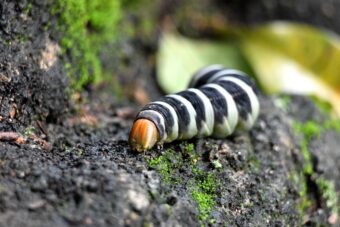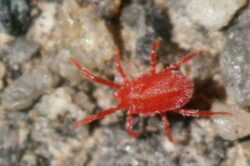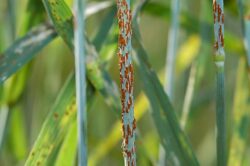In this article, we will discuss effective treatments to deal with common pests and diseases found in the garden. In a previous article, I have discussed why it is important to have a healthy plant but we will still face pests and diseases and in this article, we will discuss the best way to deal with them.
BEST WAY TO DEAL WITH COMMON PESTS
APHIDS

These are soft sap-sucking black, green or whiteflies that are sometimes winged. They weaken and distort growth, whilst carrying viral diseases. They also secrete honeydew that will support the growth of the fungal infection called sooty mould.
The best way to treat them is:
- Grow susceptible plants under fleece.
- Encourage birds and insect predators.
- Blast off colonises with a hose of clean water.
- Use insecticidal soap to get rid of bad infestations.
CATERPILLARS AND LARVAE
These are the young larvae of moths, butterflies, sawfly and many other types of insects. Some of these are seasonal and rarely seen, whilst others are invisible, hibernating in the soil. They tend to decimate leaves, stems, fruit and roots.
- The best way to treat them is to pick off visible larvae and destroy them. Spray with 60 grams of salt in 4.5 litres of water or with Bacillus Thuringiensis for special pesticide preparation.
SLUGS AND SNAILS
These are soft-bodied molluscs that feasts on a vast array of plants, mainly at night and when it had been raining. Some slugs live under the soils where they will do a lot of damage.
They tend to target soft parts of plants, where others will even eat tubers. Slugs will devour and destroy seedlings.
- At dusk, handpick on damp days checking under leaves and plant debris. Set traps, wool mat deterrents, arrange barriers of grit and pellets around plants, encourage thrushes, toads and other amphibians to eat these pests.
RED SPIDER MITES

These are minute sap-sucking insects that like to live in dry conditions, like those found in the home. The leaves will develop some spotted yellow with a bronze sheen, with a visible fine web seen all over.
- To treat, inspect the plant inside greenhouses regularly and forcefully mist foliage and damp down regularly plants under glass. You can spray with insecticidal soap or introduce a predatory mite under glass.
BEST WAY TO DEAL WITH DISEASES
CANKER
These are lesions that often girdle and kill complete shoots. It causes the bark and tissue death of woody plants.
- The best way to treat is to prune affected shoots back to clean, unstained wood. Do not plant susceptible varieties, especially in damp or humid areas.
MILDEWS
There are two types of parasitic fungi-powdery mildew and downy mildew.
Powdery mildew has grey dusty deposits that cause the leaves to grow distorted.
Downy mildew produces yellow areas on upper leaf surfaces and grey, fuzzy underneath.
- To control powdery mildew, avoid overcrowding and prolong dry conditions. You may find mulching and watering regularly will help.
- To control downy mildew that occurs in prolong damp and humid conditions that normally occurs late in the season, it is best to avoid overcrowding and to water in the evening.
- You can also pinch off infected shoots and grow resistant varieties.
ROTS
These are various fungi and bacteria causing the decay of plant tissue. Any plant can suffer from rotting of the roots that often occurs in damp or waterlogged conditions, especially so after injury.
- To help maintain air circulation above and below ground and ensure the soil is free-draining. Avoid overwatering, overcrowding and avoid damaging the roots with tools.
- Any obvious disease plants need to be destroyed immediately.
RUSTS

This is another fungal disease that causes rusty coloured on the leaves and stems, with bright, yellow, red or brown spore-bearing pustules. It will not kill the plant but make it look disfiguring.
- To treat, clear away any fallen affected leaves to prevent transmissions and use an effective fungicide that will treat rusts.
- Can also occur on roots. Where it is best to dig up plants and buy new, unaffected stock.
SCABS
This is a fungal and bacterial disease that pause crusty patches on leaves, stems, fruits and even on the roots. This is often superficial but it may be a gateway to other diseases.
- To prevent these from presenting themselves by watering and manuring regularly. Do not over lime the soil. Clear scabby leaves and prune off infected shoot in autumn. Any fruit and roots that are affected need to be used quickly, as they do not store well.
VIRUSES
These are quite common and affect a wide range of plants. The main symptoms are the yellowing of leaves, leaves that have spots, crinkled or unusually small. The growth may be slower and the plants do not look well.
- This is generally spread by insects or from hand contact from infected plants. There is no reliable treatment. You will need to buy a certified virus-free plant, practice good gardening husbandry and by washing your hand regularly and your tools too.
- Destroy any plants that are affected and treat any visible pest. Fruit trees will tolerate viruses but they can affect others, so do be careful. If yields decline, cut your losses and get a new, disease-resistant variety.
WILTS
This is a soil fungal disease that affects a number of plants in particular cucumber and tomatoes, often causing a total collapse. This is the result of poor drainage, overwatering or cold, wet weather.
- To avoid this, make sure the soil is never overly wet. Avoid planting plants too early and destroy affected plants.
CONCLUSIONS
In this article, we have discussed what to do when your plants suffer from some common pests and diseases. As you can see there are a lot of potential problems to which a plant can suffer from. A lot of them will not be fatal but some are to which your best option is to pick them out and destroy them.
You do not have to rely on insecticides and fungicides, but you can be proactive to avoid potential problems, which is always best.
If you have any questions or comments that you want to make on this topic, please do so in the comment box below.
Be vigilant in your garden today.
